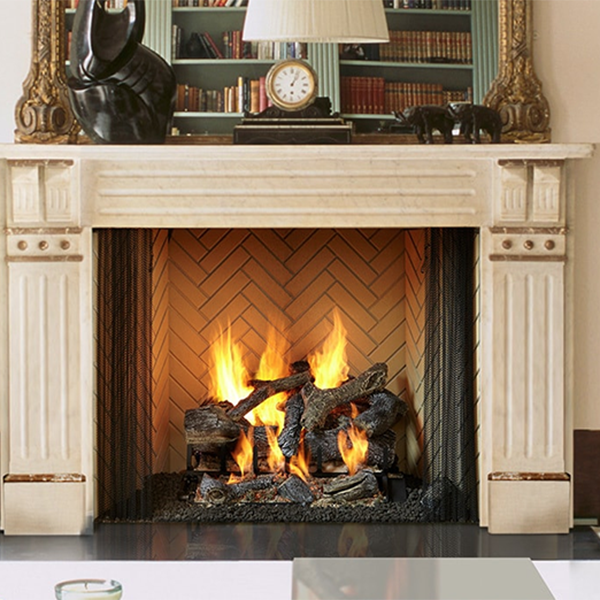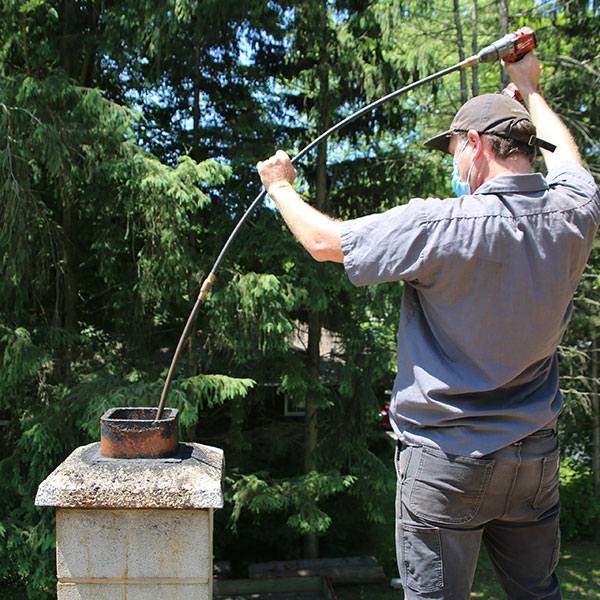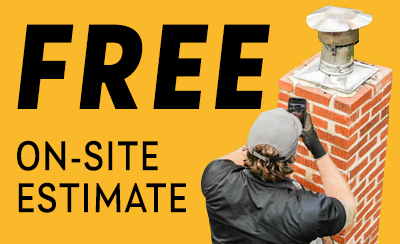How to Get the Most Out Of Your Fires With A Wood-Burning Fireplace
Wood fireplaces are lovely accents in a home and true centerpieces for relaxing, entertaining, and recreating. All activities in your fireplace room will be even more enjoyable if your fire burns big and bright. Here are some tips to get the most out of your wood fires.
 Hardwood vs. softwood
Hardwood vs. softwood
The species of tree from which your wood comes has a lot to do with how hot and long it will burn. Hardwoods such as maple, oak, magnolia, beech, and ash provide long, hot burns. Pine, redwood, juniper, fir, and other softwoods are ideal when you want shorter burn times.
Use dry wood
Whether you go with hardwood or softwood, you want to purchase wood that has had plenty of time to dry out (usually about six months). If you chop your own wood, allow it to dry, or season, in an area a few inches off the ground and shielded from rain and other moisture. Wet, unseasoned wood is not only hard to start and keep burning, but it also creates much more smoke than dry wood.
Smoke leads to two problems: 1. More smoke in the flue means more buildup of flammable creosote; 2. Excess smoke can back up into the home and carry within it deadly carbon monoxide.
Provide plenty of air
In order to burn efficiently, fire needs sufficient air. Keep this in mind when stacking your logs. By making a loose stack, you’ll allow plenty of air to move in between the individual logs. With a fireplace grate, you can keep air circulating beneath the log stack.
Also important is that your fireplace receives a good supply of air. The chimney flue should be clear of obstructions (see below), and your house should not be too air-tight. If your house is built in a way that restricts airflow throughout it, crack a window when using your fireplace.
 Keep the flue clean
Keep the flue clean
A clean chimney flue provides the proper draft for its fireplace. Flues can become narrowed with obstructions that reduce drawing power, which will prevent your logs from burning efficiently.
The two primary obstructions in flues are outside debris and smoke-generated creosote.
Debris: Tree leaves and twigs along with the nests of small animals and animals who have died inside the chimney unable to get out can create serious smoke-drafting problems. The way to prevent this is to have a secure chimney cap or flue cover installed at the top of your chimney.
Creosote: As noted, creosote builds up in the flue every time a wood fire is burned. Over time, this sticky, flakey or solid substance can narrow the flue passage and compromise its ability to pull smoke and toxins up into it.
Unlike with outside debris, you can’t prevent creosote from forming. But you can get rid of it safely by scheduling an appointment with a CSIA-certified chimney sweep. Chimney cleaning should be performed once a year to keep the chimney clean and reduce the chance of a chimney fire.
Efficient appliances = efficient burning
Felgemacher Fireplace Shop of Cheektowaga, NY, serves the entire Buffalo, NY, region with a full selection of top-name wood fireplaces, wood heating stoves, and wood fireplace inserts. Our field division, Felgemacher Masonry & Chimney provides licensed and certified chimney cleaning and related services.
If it’s time to add a new appliance to your home, let us show you models that are highly efficient and will meet all your heating and aesthetic needs. Good burning practices along with a great fireplace or stove is an unbeatable combination.
Visit us at 2727 Broadway Suite 5 in Cheektowaga, or give us a call at (716) 482-1820.





